

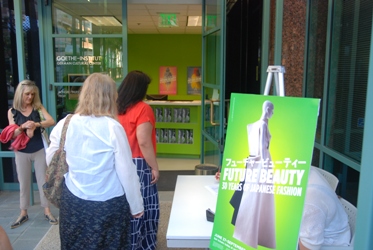
Ever since the country's opening in the late-nineteenth-century Meiji era, Japan has had a distinctively creative relationship with Western dress, whose influences it has variously incorporated, assimilated, re-interpreted, and rebuffed ever since. The Japanese designers who best embody this complicated stylistic relationship, the first generation to seriously study Western fashion, came to prominence in the 1970s, contemporary with but standing aesthetically apart from the rise of punk as an ethos and Milan as a fashion center. In what "appeared to be an endorsement of shabbiness," Kawakubo, Yamamoto, and Miyake eschewed the rising slick, form-fitting, multicolored wave, favoring instead monochromatic, black-intensive palettes, experimental materials, wrinkles, holes, and "curious lumps." These designers brought together traditional Japanese aesthetics, as laid out by novelist Junichiro Tanizaki's In Praise of Shadows, with the kind of separate but highly advanced technological innovation for which their country had then become widely respected.
Alas, said Fukai and Takeda in response to an audience question about whether it could all happen again, the 1980s now seem to have offered a moment in Japanese fashion that nobody could ever replicate. They don't see the same creativity in Japan now that they saw then, and moreover, they suspect that no designer could truly shock us today — due in large part, no doubt, to all the shocking 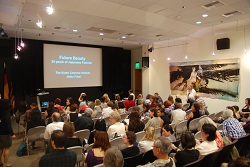
Date: Friday, June 28th starts at 7pm
Venue: Goethe-Institut Los Angeles (across the Courtyard from JFLA)
Address: 5750 Wilshire Blvd. Suite 100, Los Angeles, CA 90036
Admission: Free
What is the soul of the contemporary Japanese fashion that so captures the world's attention?
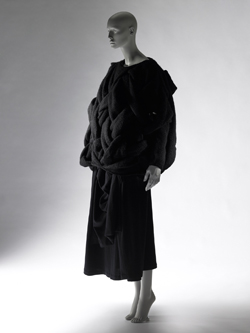 Issey Miyake, Rei Kawakubo (Comme des Garçons), and Yohji Yamamoto showed their collections in Paris for the first time more than thirty years ago, roiling up both criticism and praise for their radical departure from Western conventions of fashion design. Yet
Issey Miyake, Rei Kawakubo (Comme des Garçons), and Yohji Yamamoto showed their collections in Paris for the first time more than thirty years ago, roiling up both criticism and praise for their radical departure from Western conventions of fashion design. Yet 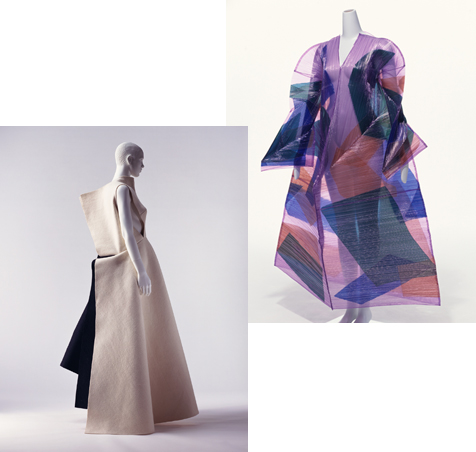 in fact, it was their unique aesthetic sense that continues to influence the fashion world of their successors with the idea that Japan's fashion represents the future ahead of its time.
in fact, it was their unique aesthetic sense that continues to influence the fashion world of their successors with the idea that Japan's fashion represents the future ahead of its time.
Tracing thirty years of Japanese fashion, the exhibition Future Beauty: 30 Years of Japanese Fashion is finally arriving in Seattle here in the United States, having made its way through London, Munich, and Tokyo, and Akiko Fukai, its curator, heads to Los Angeles as soon as she ties up its Seattle opening. Join us as we investigate with her the soul of Japanese fashion.
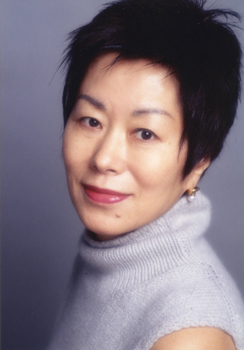 Akiko Fukai is Director and Chief Curator of the Kyoto Costume Institute. She received her master's degree in the History of Fashion at the National University of Ochanomizu, and also studied Art History at the Université de Paris IV (La Sorbonne). She has organized several major fashion exhibitions in Japan, Paris, and New York, including Revolution in Fashion, Japonism in Fashion, Fashion in Colors, Luxury in Fashion Reconsidered, and Future Beauty: 30 Years of Japanese Fashion. She is the author and editor of many books, including Japonism in Fashion (Heibonsha, 1994), Fashion (Taschen, 2002), The Century of Fashion (Heibonsha, 2005), and Reading Fashion from Pictures (PHP Institute, 2009).
Akiko Fukai is Director and Chief Curator of the Kyoto Costume Institute. She received her master's degree in the History of Fashion at the National University of Ochanomizu, and also studied Art History at the Université de Paris IV (La Sorbonne). She has organized several major fashion exhibitions in Japan, Paris, and New York, including Revolution in Fashion, Japonism in Fashion, Fashion in Colors, Luxury in Fashion Reconsidered, and Future Beauty: 30 Years of Japanese Fashion. She is the author and editor of many books, including Japonism in Fashion (Heibonsha, 1994), Fashion (Taschen, 2002), The Century of Fashion (Heibonsha, 2005), and Reading Fashion from Pictures (PHP Institute, 2009).
